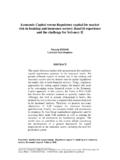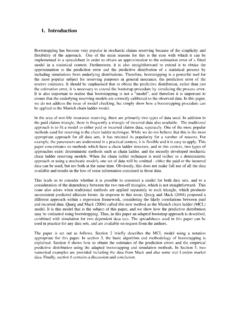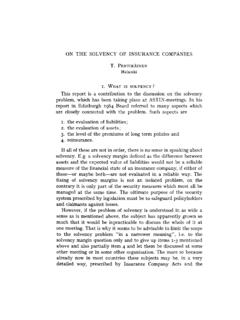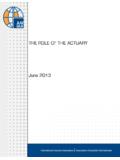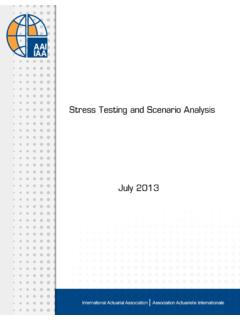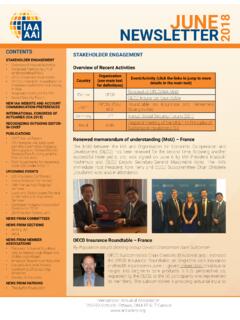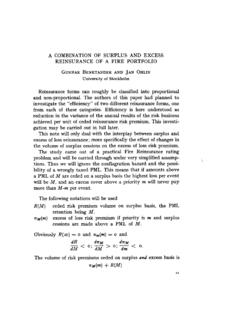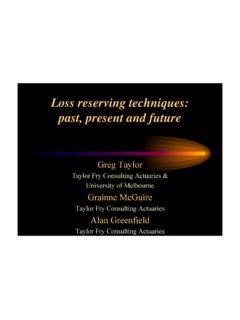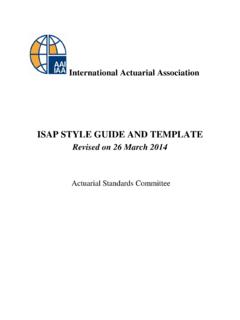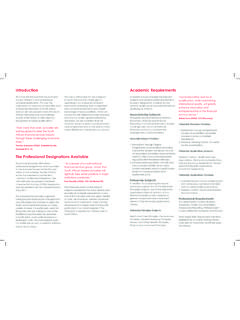Transcription of A Multiple Factor Model for European Stocks
1 A Multiple Factor Model for European Stocks THOMAS G. STEPHAN*, RAIMOND MAURER** AND MARTIN D RR** *) Deutscher Investment Trust (DIT), D-60329 Frankfurt/Main, Mainzer , Germany Telephone: 49 69 263 14306 Facsimile: 49 69 263 14937 E-Mail: **) Johann Wolfgang Goethe University of Frankfurt/Main, Chair for Investment, Portfolio Management and Pension Systems D - 60054 Frankfurt/Main, Mertonstrasse 17, Germany Telephone: 49 69 798 25227 Facsimile: 49 69 798 25228 E-mail: **) Deutscher Investment Trust (DIT), D-60329 Frankfurt/Main, Mainzer , Germany Telephone: 49 69 263 14555 Facsimile: 49 69 263 14972 E-Mail.
2 Abstract We present an empirical study focusing on the estimation of a fundamental multi- Factor Model for a universe of European Stocks . Following the approach of the BARRA Model , we have adopted a cross-sectional methodology. The proportion of explained variance ranges from to in the weekly regressions with a mean of For the individual factors we give the percentage of the weeks when they yielded statistically significant influence on stock returns. The best explanatory power apart from the dominant country factors was found among the statistical constructs success and variability in markets.
3 1. Introduction Multiple Factor models attempt to describe asset returns and their covariance matrix as a function of a limited number of risk attributes. Factor models are thus based on one of the basic tenets of financial theory: no reward without risk. In contrast to the Capital Asset Pricing Model (CAPM) first presented by SHARPE (1964), LINDNER (1965) and MOSSIN (1966) that uses the stock beta as the only relevant risk measure, empirical studies could not confirm this very restrictive statement. For instance, FAMA/FRENCH (1992) found price to book value ratio and market capitalisation (in contrast to beta) to have significant influence on stock returns.
4 The Arbitrage Pricing Theory presented by ROSS (1976) already posited a more general Multiple Factor structure for the return generating processes. However, it neither specified the nature nor the number of these factors . Starting with the studies of ROSENBERG, Multiple Factor models have been applied early in investment practice, mainly because they allow a differentiated risk-return-analysis. The applications of Multiple Factor models are various and are based on the analysis and prognosis of portfolio risk. Multiple Factor models can give valuable insights especially in performance and risk attribution.
5 They provide used prospectively for a better basis for portfolio construction (because of an improved risk prognosis) as well as the basis for deliberate deviations from a benchmark portfolio (cf. ALBRECHT/MAURER/MAYSER 1996). The objective of this study is the conception and empirical application of a fundamental Multiple Factor Model for a universe of 652 European Stocks using fundamental descriptors. The Model is estimated according to a cross-sectional approach and its explanatory power is verified over time.
6 The article is structured as follows: The theoretical foundations that are relevant for the conception of a Multiple Factor Model are presented in section 2. In section 3 we present the basic statistical techniques for the identification of Multiple Factor models. The underlying data, the methodology and the findings of the empirical work are presented in section 4. The conclusion in section 5 summarises the results. 2. The general structure of Multiple Factor models In the general form Multiple Factor models posit that the period returns of the different assets are explained by common factors in a linear Model .
7 The asset returns are influenced by the factors according to the sensitivity or exposure of a specific security to these factors . These sensitivities thus play the role of beta in the CAPM, which represents the exposure of a security to a whole-market- Factor . In addition, the asset return is influenced by another component, the so-called specific return, which is assumed to be independent of the Factor returns. A Multiple Factor Model for the i = 1, .., n relevant securities of a market thus looks as follows: Ri = i + i1 F1 + .. + ik Fk + i.
8 (1) where Ri return to security i, i, ij sensitivity/exposure of security i to Factor j, F1, .., Fk the k factors , i specific return to security i The variables Ri, F1, .., Fk and i are random variables. The variance of i is denoted by i, the covariance matrix of the factors by . In order to make this Model a useful instrument, however, some assumptions must be fulfilled. The most important is that the specific returns 1, .., n are not correlated amongst each other. This implies that the correlation between the returns of two different securities is solely determined by their common dependence on the factors F1.
9 , Fk. It will appear later that this assumption makes the estimation of , the covariance matrix of the securities, much easier. Another assumption is that the expected specific return E( i) is zero, that the entire expected asset return which is not caused by the Factor returns is comprised in the component i. Finally it is assumed that the specific returns are independent of the factors . Equation (1) holds in period t. The corresponding index has been left out for simplicity. It is important to mention, however, that all terms of equation (1) can change over time. This is obvious for the asset returns and the factors .
10 For the time being we will also allow the sensitivities to take on different values in different periods. In financial theory the covariance matrix of the asset returns is of specific interest. We will therefore look at equation (1) in matrix notation to see the functionality for all assets at one time. R is the random vector of the returns with the elements R1, .., Rn. As the sensitivities are often referred to as loadings of the securities on the respective factors the matrix of these exposures is denoted by ~L. The matrix ~L looks as follows: ~Lknnnk= 11111mooom.
